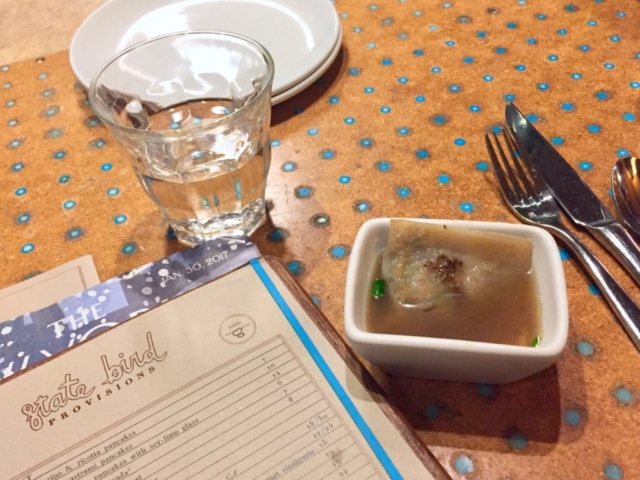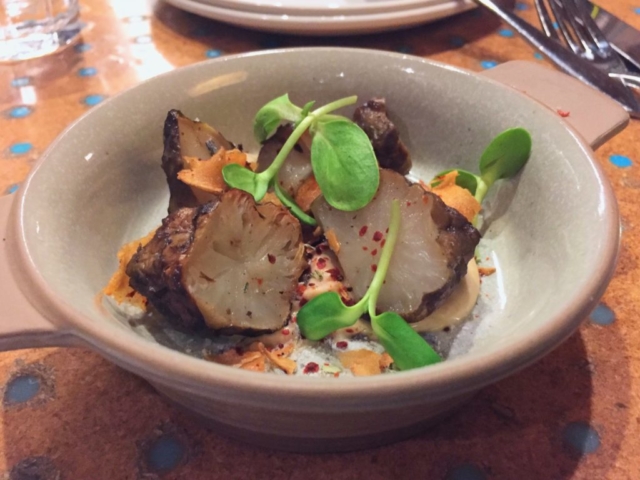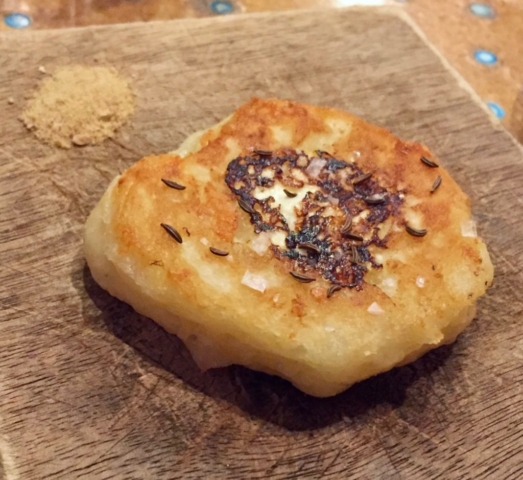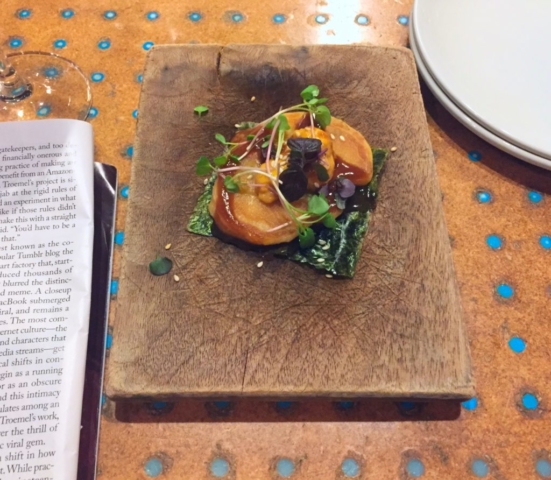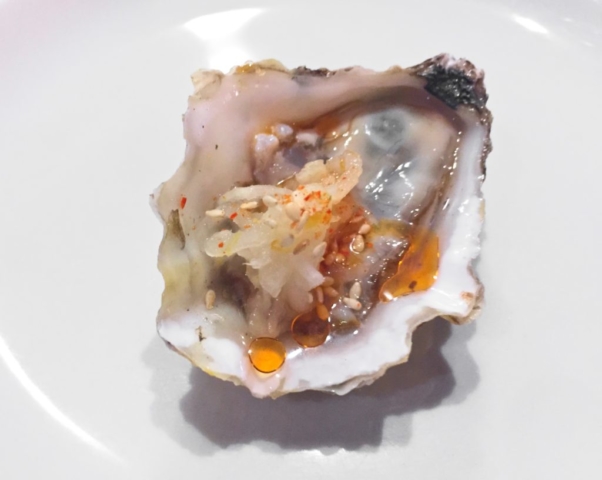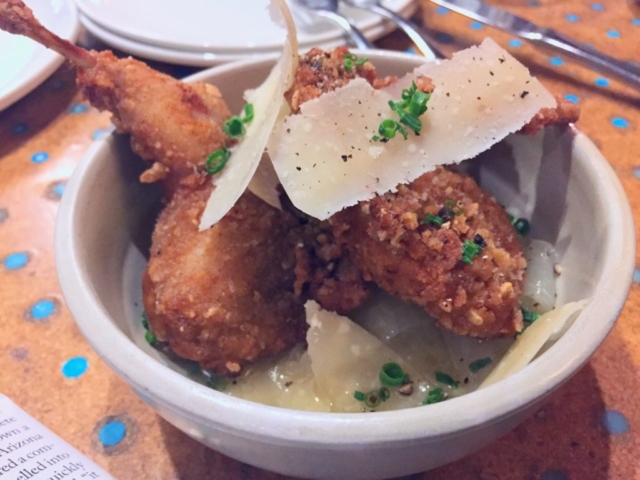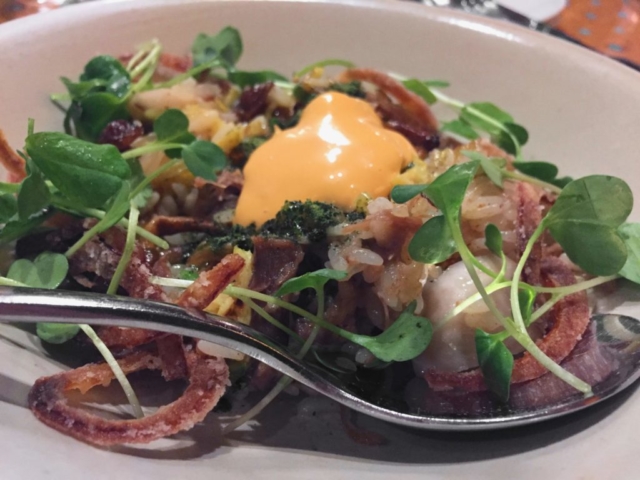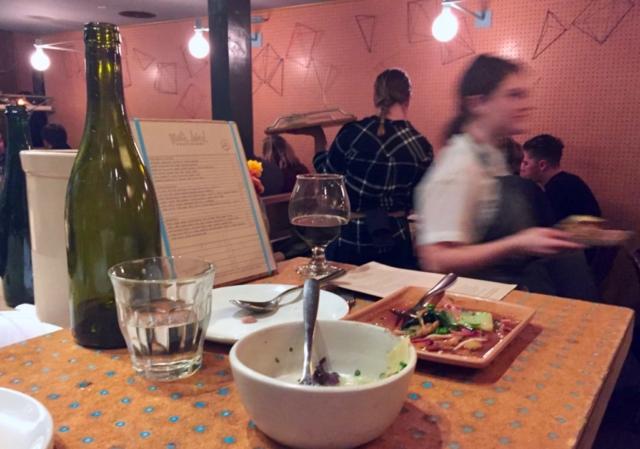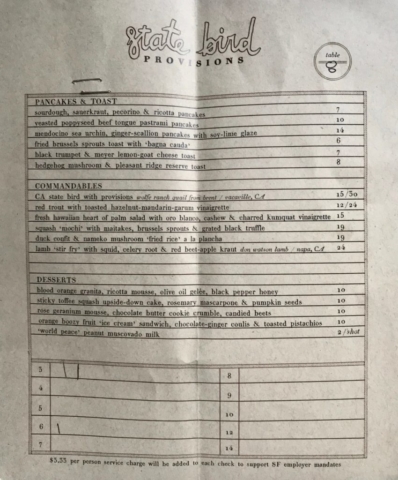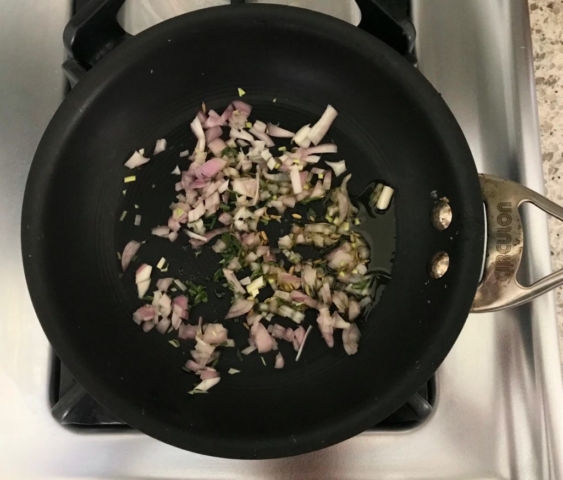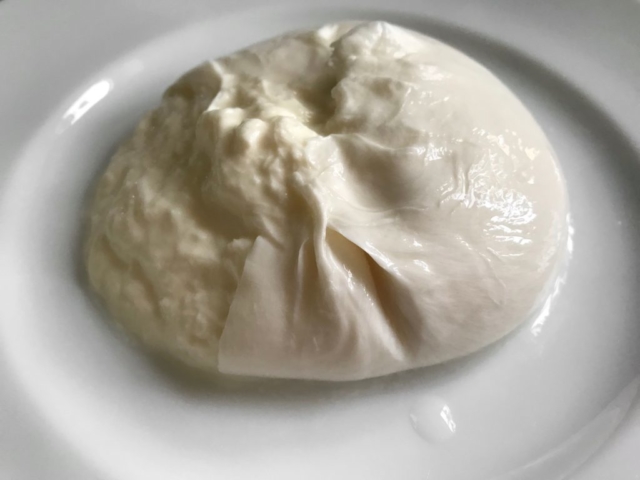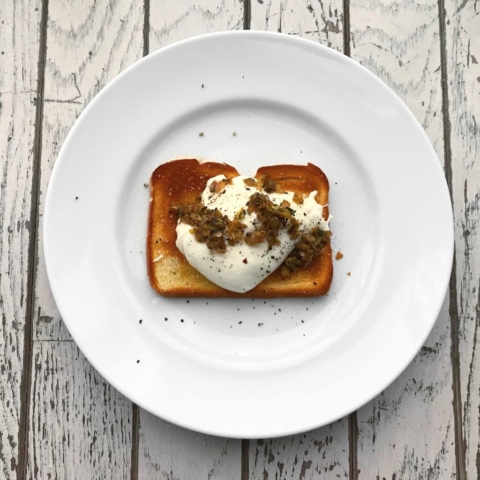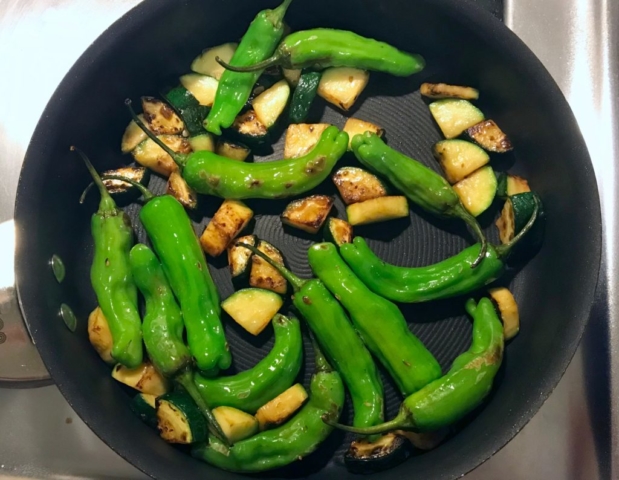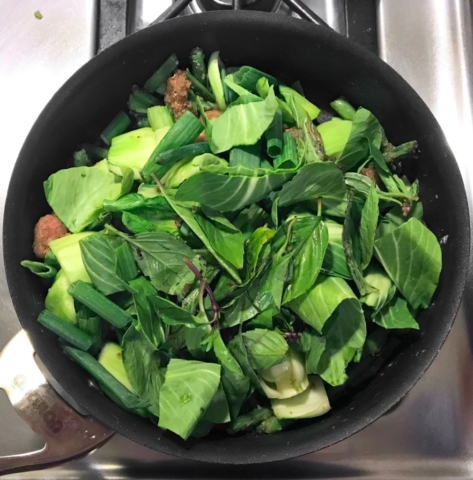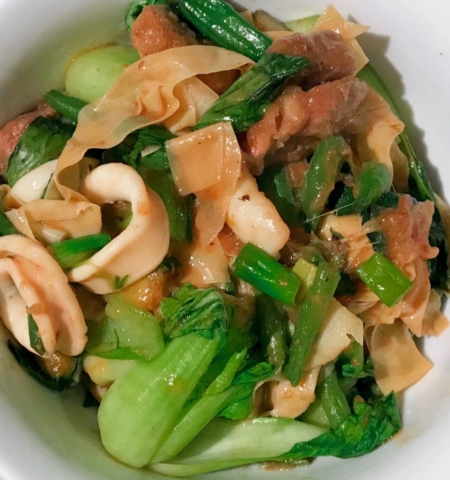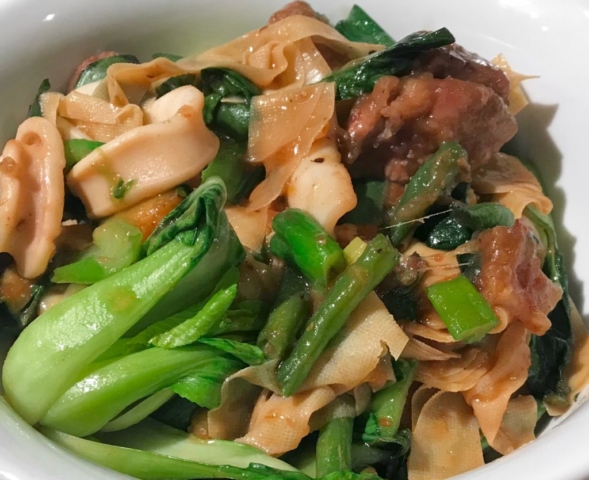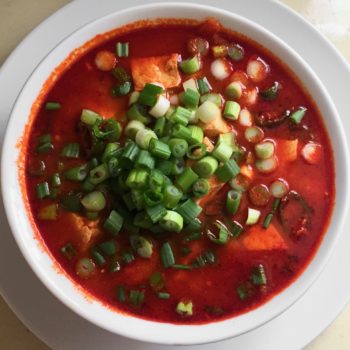
State Bird Provisions: A Cookbook
Stuart Brioza and Nicole Krasinski with JJ Goode
Photographs by Ed Anderson
2017
Pre-ordered with love from Amazon
Recipes cooked: Garlic bread with burrata and aromatic pepper spice (minus homemade bread); bonito-rosemary aioli; deep-fried sweet soy-marinated fish parts (minus frying); cumin lamb with squid, dates, shishito peppers, and Thai basil
Recipes I want to cook: Duck liver mousse with warm duck-fat financiers, brined beef tongue, rice-crusted trout with garum, brown butter, hazelnuts, and mandarin
Difficulty to make: Hard, but I hope you’ll read my reassurances below
Difficulty to source: Hard, and ditto
Dinner at State Bird Provisions in spring 2017
In September, 2016, I wrote a thank you note to the manager of The Progress, the lesser known sister restaurant to State Bird Provisions, gushing, “I still think about your roti with sunchoke crema and truffles and wonder if I’ll ever get to have something so beautiful and comforting and surprising again!” I went on about my server, also a Kate, and ended the love letter a bit self-consciously, hoping that “it might be nice to hear when you’ve done something truly wonderful for someone.” I received a heartfelt thank you note in return.
I returned to The Progress more than a year later and had a second meal as perfect as the first. At that point, I declared it my favorite restaurant anywhere. I also ate at State Bird Provisions on another business trip, and the locally grown heritage apple didn’t fall far from the proverbial tree. After three meals, it’s not good luck anymore—it’s remarkable talent and consistency.
Northern California natives Stuart Brioza and Nicole Krasinski fell in love in a photography class in Cupertino (of that other kind of Apple), then made names for themselves as a chef and baker, respectively, in Chicago, northern Michigan, and San Francisco. In the early and mid-aughts, I made pilgrimages to restaurants in New York City that were getting a lot of publicity and awards for moving away from the French, white tablecloth, filet mignon and foie gras model of fine dining toward a local, rustic, braised tongue and beet green pesto model—then traveled to the Midwest and deep South in the later aughts and found out that was how it was always done there. The chefs describe a similar experience when they got to Ellsworth, Michigan, brimming with hardy winter vegetables, cherries, and small game—Brussels sprouts, bings, and bunnies. Brioza shares an anecdote about the owner of the acclaimed Tapawingo restaurant bristling at the “unremarkable flown-in produce, meat, and fish that arrived in one big truck from a distribution center that was hours away,” telling the young chef who was ordering it all, “it’s time to dance with the girl you brung.” The two of them have not stopped cooking local and seasonal ingredients since.
When Brioza and Krasinksi returned to the Bay Area, they headed up the back of house for the famed Rubicon, which graduated some of the most respected chefs in the country, like Traci Des Jardins, Elizabeth Falkner, Jeremy Fox, and Chris Cosentino, and some of the best sommeliers, too. They then operated a home based catering business for a few years before eyeing the real estate near their Hayes Valley apartment that would be their greatest success yet.
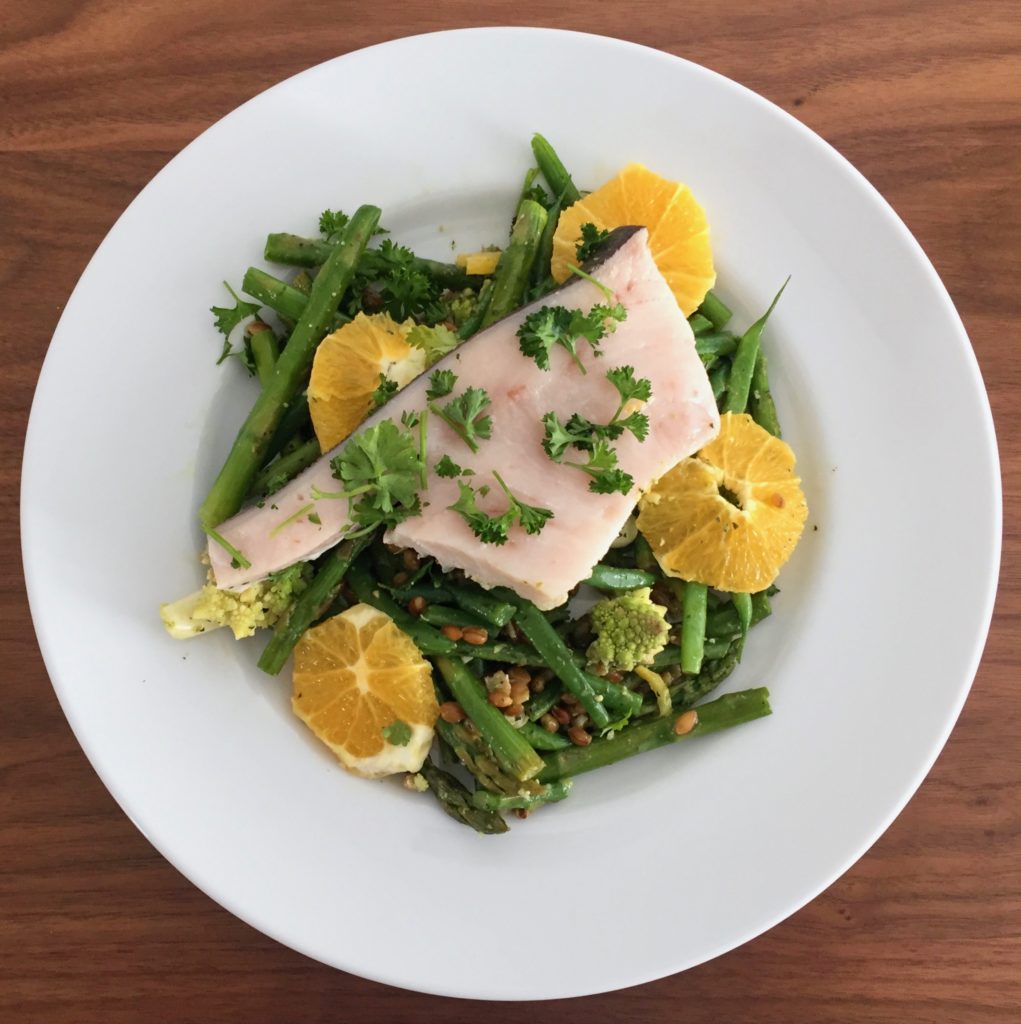
Swordfish at home prepared with the technique the chefs generously shared with me at The Progress at the end of my meal, and the only way I think I’ll be happy eating swordfish the rest of my entire life
The Progress was the “dream restaurant,” but State Bird Provisions had to happen first for logistical reasons. The two restaurants are adjacent to each other on Fillmore Street in San Francisco, across Geary Boulevard from the city’s Japantown, within the larger district called the Western Addition. The space that State Bird inhabits was last a pizzeria and could be cleaned up relatively quickly, whereas the Progress inhabits an old movie theater that had no gas, electricity, or plumbing, and it wasn’t zoned as a restaurant. (Bureaucracy!) The couple decided to rent both and open State Bird as soon as possible.
For not being the “dream restaurant,” State Bird exceeded expectations. After eight months, Bon Appetit named it the best new restaurant in the country.
I’m not surprised that their first cookbook is ascribed to it (and hopefully not the last). State Bird attracted everyone’s attention because it did things other “new American” restaurants either hadn’t succeeded at, hadn’t risked, or hadn’t even thought of: they used flavors from the entire world over but the menu actually felt really cohesive, they decided to forego a reservation system, and they rolled out dim sum carts. It was the carts that made everyone so willing to wait hours in lines around the block to try Italian all’Amatriciana made with tofu skin “noodles.” Guests got the chance to try more dishes, engage with the staff in a fun way, and relive the nostalgia of watching the carts approach, peering under the lids, and choosing anything they wanted, as they had so many times at Chinese dim sum palaces before then—sheer joy.
Local burrata toast with shallots and many, many spices, that I actually had!
The cookbook has four sections, savory and sweet staples followed by recipes that incorporate them, twenty chapters in all. Most of the chapters are predictably organized like salads and vegetables and drinks, but some are more whimsically named, like “sprinkles, crunches, and powders,” “stab and drag,” “dollops, sauces, and custards,” “State Bird ice cream sandwiches,” and “wild cards.” Much like the restaurant, many dishes are hard to compartmentalize, and that’s good.
The sprinkles and crunches are particularly eccentric and unique to this cookbook. If you’re patient and trust the science of curing eggs at room temperature—the Chinese have done it for five hundred years so you should—in thirty days, you can make chicken egg bottarga. The crispy garlic chips could go on pretty much anything I eat. The black sesame salt is something I’d already come up with in my own cooking for homemade Japanese and Korean soups, as it’s just black sesame seeds and salt, and I love both, but I learned something important about black sesame from the description. The cookbook is somewhat light on meat and seafood, especially seafood that isn’t smoked. The highlight of the meats is intended, I’m sure, to be their recipe for state bird with provisions—California’s state bird, quail, buttermilk marinated, breaded, and fried, with caramelized onions, chives, and a ribbon of Parmigiano cheese. Yup, that’s its namesake.
As with most cookbooks from restaurants of the caliber of State Bird Provisions, this is hard to source, hard to cook, and easy to love nonetheless. When you eat at State Bird, you think to yourself, how in the world did someone come up with this dish? (Especially the desserts.) And the cookbook tells you. Many recipes are going to be too involved for even an experienced home cook with all the time and international grocery stores in the world, as I do. But I was so enamored of so many flavor combinations—katsuobushi and rosemary, burrata with Sichuan pepper, fresh corn and Mt. Tam cheese, cumin lamb with squid, walnut ice cream topped with poached quince and manchego cheese with a mushroom cookie—that I had to experiment.
Katsuobushi—dried, fermented, and smoked tuna flakes—has a flavor that I would describe as woodsy, oceanic, and salty, and because of the earthiness the smoke imparts on the fish, of course piney rosemary worked with it in the bonito-rosemary aioli (page 73). I spooned it over baked fatty salmon fillets I’d marinated with soy, mirin, sugar, and ginger from the recipe for deep-fried sweet soy-marinated fish parts (page 215), to which I added a little bit of sesame oil, and it worked.
Similarly, my locally made burrata loved the citrusy tang of the Sichuan pepper and curry powder in the aromatic pepper spice (page 98). I didn’t make the sweet garlic puree to accompany it, much less bread knots from scratch, but toasted country white bread rubbed with garlic hopefully conveyed almost as much. Brilliant.
Cumin lamb with squid, dates, shishito peppers, and Thai basil
The most involved recipe I made is the cumin lamb with squid, dates, shishito peppers, and Thai basil, which is sweet, salty, and bright, with crisp green beans, soft charred zucchini, and aromatic fresh squeezed orange juice and peeled rind. It has more than thirty ingredients, most of which are common and easy to prepare, but I say that as someone who prefers cleaning squids to ironing shirts. You may not share my idea of “easy.”
You’ll do well if you can read the recipes and decide what’s not really essential or realistic. I didn’t feel like making lamb stock from scratch for a half cup’s worth for the glaze, so I added a star anise pod to warm beef bouillon stock and let it sit for a bit. It was reminiscent enough to work. I think the lamb dish could have been great without potato starch, pea sprouts, and shishito peppers, but I really loved the zucchini and dates. I also changed the cooking order and timing of the ingredients, because I don’t know a world, or more specifically a home cook’s kitchen, in which this much protein and these many vegetables can cook perfectly in five and a half minutes on the first try.
The yuba for “noodles” was a first time purchase—not essential, either, but I knew I’d like it: when you make tofu, it’s the skin that forms on the surface of the warm soy milk and gets skimmed off throughout the cooking process and dried. When you cut it into strips at home, it’s just elastic enough not to tear too much in a soup or stir-fry—a tofu noodle. Brioza recommends Hodo Soy brand in the cookbook, which is a smallish production based in Oakland and not widely distributed. I’ve had otherworldly homemade tofu in restaurants in Tokyo, the Japan Alps, Chongqing, New York, and Los Angeles—it can be creamy, ethereal, even spiritual—but you will not find that in the freezer section of your Asian grocery store for $2, where yuba is likely to be labeled “soy sheets” and share its appearance and texture with a cloth bandaid. (I have one wrapped around a bad cooking burn on my left index finger right now to confirm this.) In spite of itself, I happen to like the cheap generic stuff, but feel free to forego it or use flour based noodles.
I think you just have to be confident and creative with what you can do, and not think about what a dish would be if you made it “perfectly.” Pick up flavor combinations and techniques where you can, and have fun. I would love to make the duck liver mousse, for example, which calls for both madeira and port. While distinctive on their own, they’re not that dissimilar when diffused in cooking, so I would feel comfortable using only one (or cognac or sweet sherry or a really big jammy red wine) when the wines are, in total, two and a half tablespoons of flavor going into approximately three total cups of ingredients. And I’ll be honest—I’ll probably make this with chicken or turkey livers and port first because they’re familiar and cheap and available ingredients for me. But I’ll still give them the State Bird Provisions cookbook spa treatment: half an hour in the hot bath and steam room that is a pot of water in my oven.
Truly, my one and only disappointment with the book is that there isn’t a sunchoke recipe. I’ve had sunchokes done brilliantly at both restaurants, and they were so good I begged to know how they cook them, and they actually told me. I shouldn’t share, but I’ll admit I was very surprised to find out how much heat those tiny tubers can take when I tried it at home. I’m just going to cross my fingers that that recipe will come with a second cookbook, called The Progress.

